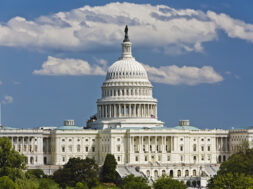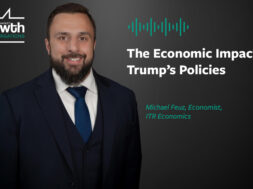Middle-Market Public Policy Roundup
The SEC chaged its accredited investor definition, an oversight panel included information provided by the ACG in its latest report, and more.

The August recess didn’t stop a burst of activity for financial services in the nation’s capital over the last week. Perhaps the biggest news came out of the Securities and Exchange Commission, where a rule change could open private markets up to hundreds of thousands of new investors.
We also provide a summary of the Congressional Oversight Commission’s latest report, which included information provided by the Association for Corporate Growth, a White House report on private equity’s involvement in opportunity zones, and a newly introduced bill that will make it easier for businesses to apply for PPP loan forgiveness.
SEC Widens Pool of Accredited Investors with New Rule
More investors will be able to participate in private capital markets after the Securities and Exchange Commission announced Wednesday amendments to one of the principal tests that determine eligibility.
The agency updated definitions to its accredited investor standard, which now allow professionals with some certifications and “knowledgeable employees” to participate in private investments, including private equity funds, 60 days after the amendments appear in the Federal Register.
“For the first time, individuals will be permitted to participate in our private capital markets not only based on their income or net worth, but also based on established, clear measures of financial sophistication,” SEC Chairman Jay Clayton said in a statement.
The definition of accredited investor hasn’t been changed since Congress established it in 1982. It previously required investors to have an annual income of more than $200,000 or a net worth over $1 million in order to invest in private markets.
Unless investors or employees with a high degree of financial expertise—including those who work in private equity or financial services—met those criteria, they faced restrictions.
The new rule is similar to a proposal released in January, which would grow the private market investor pool by 691,000 people, according to the SEC, based on an estimate of those holding professional certifications like the Series 7, 65 or 82 licenses.
The updates also allow companies with at least $5 million in assets to qualify as accredited investors, including SEC- and state-registered investment advisers, exempt reporting advisers, and rural business investment companies.
Family offices, Native American tribes and government bodies can also qualify as accredited investors, so long as they also meet the $5 million threshold.
For more background on the SEC’s accredited investor definition, read this article published in the March/April issue of Middle Market Growth.
Read the entire final rule here.
ACG Credited in Latest CARES Act Oversight Panel Report
The panel charged with overseeing the CARES Act released its latest report Friday, which included information provided by the Association for Corporate Growth.
In its fourth monthly report to Congress on the CARES Act, the Congressional Oversight Commission included ACG’s suggestions in its recommendations, information that was provided by the organization’s president and CEO, Tom Bohn, during his testimony before the panel earlier this month.
“We were encouraged by what we read in the report, especially the commission’s receptivity to making substantial changes to the Main Street Lending program,” Bohn said. “Their recommendations reflected that.”
Commissioners said some businesses could benefit from better outreach from the Federal Reserve and Treasury about the Main Street Lending Program, citing an ACG survey that found 22% of respondents were unaware of it.
After Bohn recommended decreasing the minimum MSLP loan size of $250,000 to $50,000 for the New Loan Facility and the Priority Loan Facility, the commission recommended that the Federal Reserve and the Treasury consider lowering minimum loan size.
Some members of the commission agreed with Bohn’s recommendation that the Federal Reserve and the Treasury relax the Main Street Lending Program’s affiliation rules.
“The Federal Reserve and Treasury should consider revisiting these requirements,” the report’s authors said.
Read more about Bohn’s testimony here. The commission’s full report is available here.
Private Equity Boosted Investment in Opportunity Zones
Private equity investment into distressed communities far outstripped investment in other areas, according to a White House report released on Tuesday.
The president’s Council of Economic Advisers released an initial assessment of the impact of opportunity zones. It found that private equity investment into businesses in eligible communities was nearly 30% higher than investments in areas that were either ineligible or not selected for the program since the Tax Cuts and Jobs Act—which contained the opportunity zone provision—was signed into law at the end of 2017.
States nominated census tracts in March and April 2018 to participate in the program, and the Department of the Treasury finalized its formal designation of OZs by the second quarter of 2018.
Between mid-2018 and 2019, private equity investment in opportunity zones was 41% higher than it was in prior quarters. By comparison, investment was only 13% higher in ineligible or unselected tracts —suggesting designation led to a 29% increase in investment.
PPP Loan Forgiveness Bill Surfaces
Senate lawmakers announced on Monday new legislation that streamlines forgiveness for companies that borrowed through the Paycheck Protection Program.
Introduced by Sens. James Lankford, R-Okla., and Kevin Cramer, R-N.D., the Paycheck Protection Small Business Forgiveness Act makes it easier for companies that borrowed $150,000 or less to seek forgiveness if they submit a one-page attestation form to the lender.
“Simplifying the process for loans of $150,000 and less will ensure small businesses and financial institutions can get loans processed in a timely manner,” Lankford said in a statement.
The approximately 4.2 million PPP loans of $150,000 or less account for 85% of all PPP approved loans but only 26% of the PPP funds delivered, according to Lankford’s office.
The bill is endorsed by more than 200 trade groups and associations, lending associations and labor groups. It also has received wide bipartisan support, increasing the chances it will be signed into law.
In April, Lankford sent a letter to Treasury Secretary Mnuchin and Small Business Administrator Jovita Carranza asking them to clarify the eligibility of private equity- or venture capital-backed small businesses for PPP loans.

Benjamin Glick is Middle Market Growth’s associate editor.


